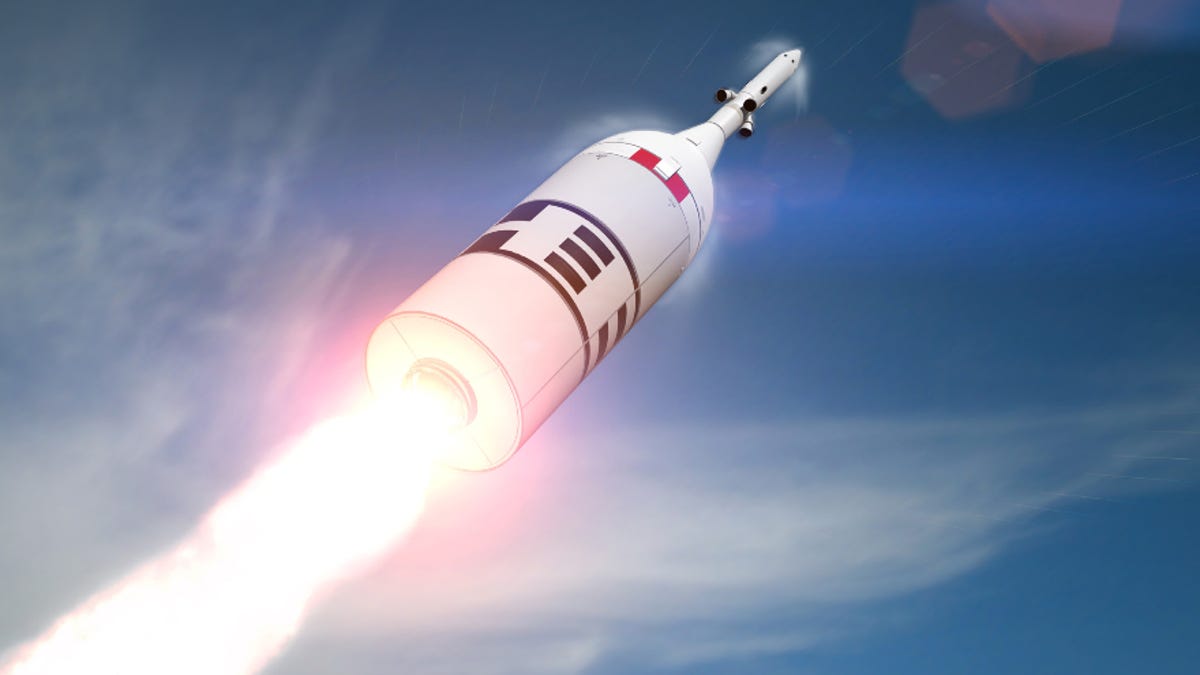NASA Orion launch: Watch as moon capsule undergoes critical safety test
The Orion module is set to take astronauts to the moon in 2024 but first needs to pass a test of its emergency abort system.

Rockets, man, burning up their fuse out there alone.
Editor's note: NASA's AA-2 test was completed July 2. The three minute flight successfully tested the launch abort capabilities of the Orion capsule. You can watch a replay below.
NASA will test a critical safety element of the Orion spacecraft on Tuesday July 2, launching the module into the atmosphere on the back of a Northrop Grumman booster. The Ascent Abort-2 test (AA-2) is an important step in NASA's plan to return to the moon by 2024 and is designed to validate Orion's emergency abort system under high-stress aerodynamic conditions.
The Orion crew module -- which is actually a stand-in shaped and weighted like the real thing -- will undergo a full-stress test of its "launch abort system," or LAS, a series of three motors designed to carry the module to safety should something go awry during a real rocket launch with astronauts aboard. It will be an uncrewed test designed to replicate a real launch, but it won't be launched on top of the Space Launch System (SLS), NASA's next-gen rocket, as is currently planned for lunar missions.
Instead, a Northrop Grumman-provided booster will be strapped to the bottom of the payload fairing shaped like an upside-down golf tee. The crew module rests inside the tee and once the fairing is jettisoned, it rapidly accelerates away from the rocket booster, powering to 31,000 feet at around 1,000 mph. When it gets safely away from the rocket, the golf tee capsule ejects the crew module and the test is over. All in all, the test should take approximately 3 minutes, beginning just 55 seconds after launching.
NASA says this is "the only opportunity to test a fully active LAS during ascent before flying crew," highlighting the importance of the mission for future deep space exploration.
We are L-1 days from the @NASA_Orion Ascent Abort 2 test, which will put the spacecraft's launch abort system to the test to ensure a crew could safely escape the vehicle in the event of an anomaly during launch. Weather is currently 70% go for the test: https://t.co/eiIPSi2ewy pic.twitter.com/C5XGqIWOX0
— NASA's Kennedy Space Center (@NASAKennedy) July 1, 2019
The launch will take place at Cape Canaveral Air Force Station in Florida, with a launch window opening at 4 a.m. PT on July 2 and remaining open for four hours. The test itself will only last for about three minutes, with coverage set to start approximately 20 minutes prior to launch.
NASA's official livestream is available at the agency's website and via YouTube, below:
Orion passed a pad abort test in 2010 and its first flight in December 2014, when it launched on the back of a Delta IV Heavy rocket. The second test, which lasted four hours, tested the spacecraft's heat shield and reentry, validating the module for spaceflight. Parachute testing, required to land back on Earth, was completed in September 2018 and NASA also staged a recovery mission in December last year, testing its capabilities to nab the capsule after it reenters the atmosphere and glides into the ocean.
NASA is aiming to launch both the Space Launch System and Orion, together, on Artemis 1. Currently, the mission is planned to last three weeks, travelling beyond the moon and returning home faster and hotter than any spacecraft before it. It's scheduled for a June 2020 liftoff and although NASA administrator Jim Bridenstine stressed in March that the SLS is struggling to meet its schedule, he has ruled out Orion launching on the back of commercial rockets like SpaceX's Falcon Heavy.
Updated 2:50 p.m. PT: Test video added
Updated 11:30 p.m. PT: Clarifies capsule being used.

